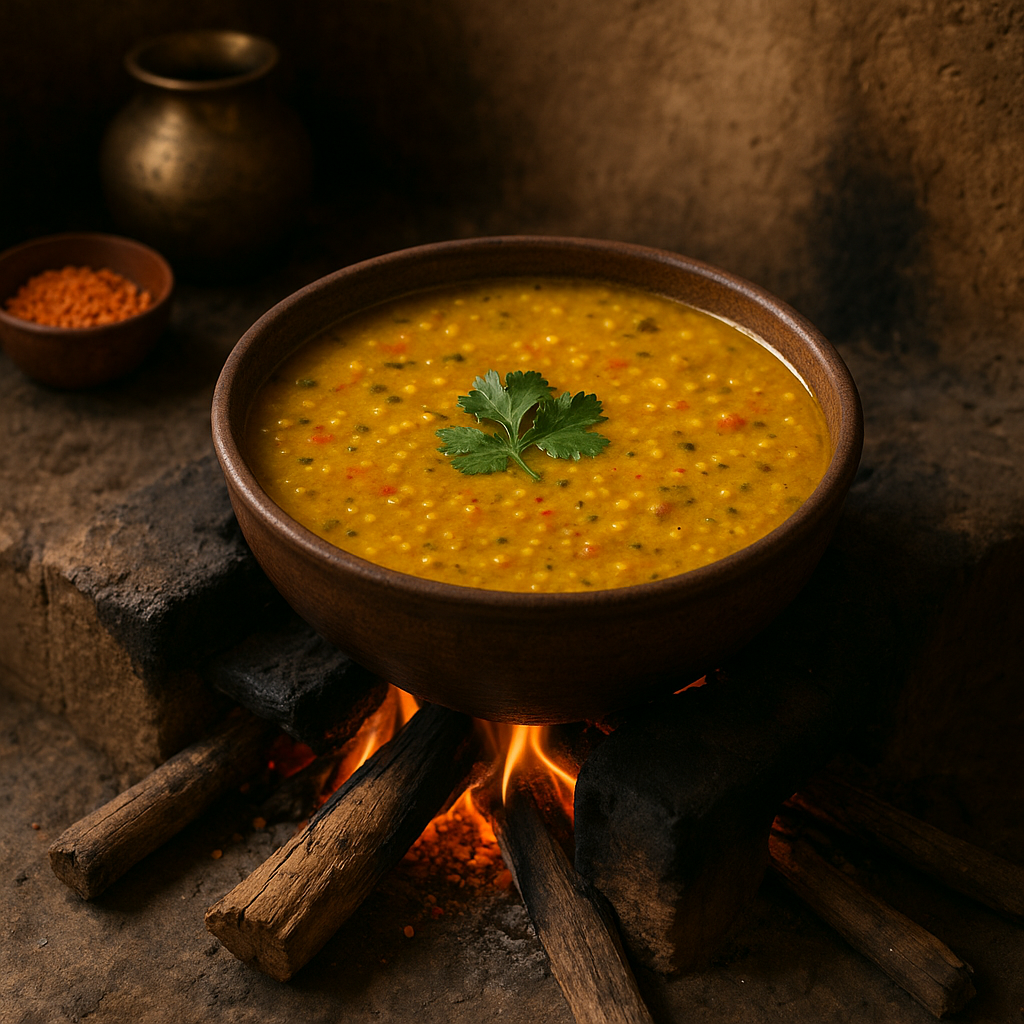
Mulligatawny
“If you can’t handle the heat.”

Mulligatawny
Originally derived from milagu thanni (“pepper water” in Tamil), Mulligatawny was never meant to be creamy or sweet. It was meant to heal, to warm, to stoke agni. What the British did was invent a colonial caricature. This version restores the original intent—spicy, brothy, sharp, and rooted in Dravidian heat.
Ingredients
- 2 tbsp ghee or coconut oil
- 1 tsp mustard seeds
- 1 tsp cumin seeds
- ½ tsp fenugreek seeds
- 8–10 curry leaves
- 1 small onion, finely chopped
- 1 green chili, slit
- 4 garlic cloves, minced
- 1-inch ginger, grated
- ½ tsp turmeric
- 1 tsp black pepper (freshly ground)
- 1 tsp tamarind paste
- 1 tomato, chopped
- 4 cups water or light vegetable broth
- Salt to taste
- Cilantro, for garnish
- Lime wedge, to finish
- Optional Add-ins (if you must):
- Cooked red lentils for body
- Rice, if serving as a fuller meal
- Chicken, if reclaiming the colonial version with a wink
How The Alchemy Happens
Heat ghee in a pot. Add mustard seeds, cumin, fenugreek—let them pop.
Add curry leaves, onion, and green chili. Sauté until soft.
Add garlic, ginger, turmeric, and black pepper. Let the aroma rise.
Stir in tomato and cook until it breaks down.
Add tamarind and water/broth. Simmer for 10–15 minutes.
Strain for a clear broth or leave rustic. Add lentils if using.
Taste and adjust salt. Garnish with cilantro and a squeeze of lime.
“When they renamed it, they didn’t just steal the dish. They stole the meaning.”
